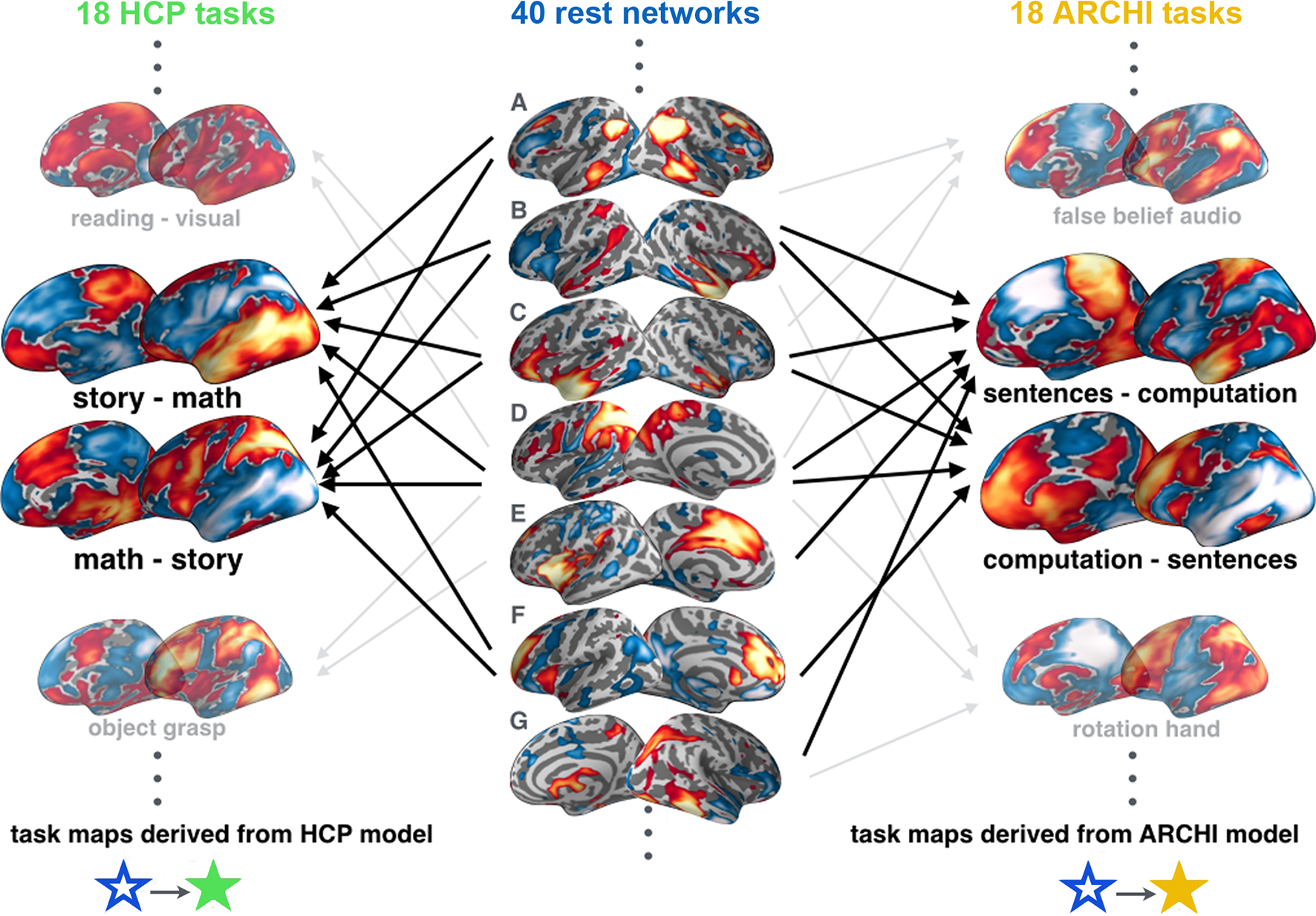Section:
New Results
Formal Models of the Network Co-occurrence Underlying Mental Operations
Systems neuroscience has identified a set of canonical large-scale
networks in humans. These have predominantly been characterized by
resting-state analyses of the task-uncon-strained, mind-wandering
brain. Their explicit relationship to defined task performance is
largely unknown and remains challenging. The present work contributes
a multivariate statistical learning approach that can extract the
major brain networks and quantify their configuration during various
psychological tasks. The method is validated in two extensive datasets
(n = 500 and n = 81) by model-based generation of synthetic activity
maps from recombination of shared network topographies. To study a use
case, we formally revisited the poorly understood difference between
neural activity underlying idling versus goal-directed behavior. We
demonstrate that task-specific neural activity patterns can be
explained by plausible combinations of resting-state networks. The
possibility of decomposing a mental task into the relative
contributions of major brain networks, the "network co-occurrence
architecture" of a given task, opens an alternative access to the
neural substrates of human cognition.
Figure
8. Task-rest correspondence: Reconstructing two similar tasks
from two different datasets based on the same resting networks. 40
sparse PCA networks were discovered from the same rest data and used
for feature engineering as a basis for classificationof 18
psychological tasks from HCP (left) and from ARCHI (right). Middle
column: Examples of resting-state networks derived from decomposing
rest data using sparse PCA. Networks B and C might be related to
semantics processing in the anterior temporal lobe, network D covers
extended parts of the parietal cortex, while networks E and F appear
to be variants of the so-called “salience” network. Left/Right
column: Examples of task-specific neural activity generated from
network co-occurrence models of the HCP/ARCHI task
batteries. Arrows: A diagnostic subanalysis indicated what rest
networks were automatically ranked top-five in distinguishing a
given task from the respective 17 other tasks. Although the
experimental tasks in the HCP and ARCHI repositories, “story versus
math” and “sentences versus computation” were the most similar
cognitive contrasts in both datasets. For these four experimental
conditions the model-derived task maps are highly
similar. Consequently, two independent classification problems in
two independent datasets with a six-fold difference in sample size
resulted in two independent explicit models that, nevertheless,
generated comparable task-specific maps. This indicated that network
co-occurrence modeling indeed captures genuine aspects of
neurobiology rather than arbitrary discriminatory aspects of the
data. See [6] for more information.
|
|
See Fig. 8 for an illustration and
[6] for more information.


